Surge Concerto: Ar nosurge Original Soundtrack
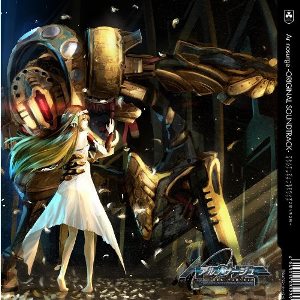 |
Album Title: Ar nosurge Original Soundtrack |
| Record Label: Gust |
|
| Catalog No.: GUSTCD-11014/6 |
|
| Release Date: March 5, 2014 |
|
| Purchase: Buy Used Copy |
Overview
Two years after Ciel nosurge was released and while its players were waiting for its two final chapters, Gust released its RPG sequel Ar nosurge: Ode to an Unborn Star. Unlike its predecessor, which divided its music in volumes according to the point in story in which it was heard, Ar nosurge employs for its music the same way of division that was used in the Ar tonelico games: an original soundtrack and two vocal albums. In this case, I will be focusing in the soundtrack, which was composed mainly by Kazuki Yanagawa and Daisuke Achiwa. However, how does it fare in comparison to its direct predecessor Ciel nosurge? And does it stack well against the previous soundtracks in the series?
Body
Using once again the three-disc soundtrack format that Gust has been employing ever since the original soundtrack for Atelier Meruru: The Apprentice of Arland was released, this soundtrack contains a rather large amount of music to parse through, which is divided in the following manner: Disc 1 contains the world map, town and area themes; Disc 2 contains the battle themes, conversation music, and Genometrics themes; and Disc 3 is comprised by event themes, non-vocal magic tracks, and special versions of the songs heard during the synthesis dances. While the songs in the soundtrack could be generally classified as a mix of electro-orchestral, there are also a few exceptions we’ll see as we advance through it.
Upon popping in the first disc, we’re immediately greeted with Ar nosurge’s opening theme: “To the Songless Hill –Harmonics Pre=Ciel-”. True to the classic Ar tonelico approach, it’s a rearranged version of its predecessor Ciel nosurge’s own opening “To the Songless Hill”. Composed and arranged by Akira Tsuchiya himself, and sung by Akiko Shikata, the song opens with Shikata singing in Bulgarian style before changing to her operatic voice singing against an orchestral backdrop. Then the song crescendos by quoting the melody of the refrain from Ciel nosurge’s ending theme “Ra Ciel Fuser” before transitioning into an expanded arrangement of Ciel nosurge’s opening. Towards the climax, the piece develops into a more complex and intense version of the melody that was used in the refrain to “Ra Ciel Fuser”, before changing key and ending in soft and relaxing manner. Note that this song was released several months before Ciel nosurge‘s ending theme, so regardless of my statements it’s somewhat hard to say which one is quoting which.
The song basically is an allegory to the feelings that are conveyed through our actions and words, similarly to the Ciel nosurge opening. However, it also adds that the world on the other side of the screen does really exist, and that it is summoning us there because they need our help. And curiously enough, the entire set of opening choruses on it are all direct quotes from the opening choruses employed in the opening to Ar tonelico: Melody of Elemia “Singing Hill –Harmonics EOLIA-”, the only difference being that they are sung in a different fictional language (Emotional Song Pact instead of Hymmnos).
Moving on to the background music, listeners can enjoy the Bios Shop and menu theme “Onogoro”. Composed by Daisuke Achiwa, it’s a piece dominated by a single ad-lib voice accompanied by electronic sounds. While enjoyable, I feel it lacks development because it ends far too fast before it can get to do anything, even though it does give off a strong sci-fi vibe.
Next we come to the world map themes.“S/L” and “A Nearby Place that Seems Faraway” were both composed by Kazuki Yanagawa, and they’re both electronica-dominated pieces that can be heard in the Orei and Singing Hill sections of the game’s main world map. The former is composed by electronica sounds with some strummed strings and synth piano, which play a melody that evokes a deep feeling of isolation and sadness. It really captures the oppression of the humans, who have been confined to live within a large metal orb and haven’t seen actual sunlight or a real sky for several millennia. The latter is also formed entirely by synth, and it makes some interesting uses of sound manipulation to imitate an old radio being tuned in order to evoke feelings of nostalgia. This is appropriate, given that part of the world map is where the Singing Hill space station was left after Ra Ciela was destroyed, and it still keeps watching over the energy field that remains where the planet’s core used to be located so many years ago.
However, the two world map themes made by Daisuke Achiwa are far less introspective. Heard in the main section of the Soreil ship, Sharlanoia, “The Blue Ark” is an orchestral piece accompanied by synth sounds that really gives the feeling of watching the entire Soreil from above, from the top of its Bezelieltron tower to the gates that lead into Orei, all with the false terraformed planet created by the Sharls being constantly visible over it, and it also does its role of getting the player in an adventurous mood. However, I have to say it also reminds me a bit of the “Sailbird” piece he made for Mana Khemia: Alchemists of Al-Revis. On the other hand, his other world map piece is a real nostalgia bomb for Ar tonelico fans, as it’s a rearrangement of Ken Nakagawa’s world map theme for Ar tonelico: Melody of Elemia. Titled “Green Lands for Ar nosurge” and serving as the theme for the world map section set in the planet of Ar tonelico, Ar Ciel, it begins with a sole singing voice before blooming into a more subdued and calmed form of the classic “Green Lands”. Aside from the slower rhythm and a few minor changes in the instrumentation, it’s a very faithful arrangement to its source material, and one that should tug at the heartstrings of those who played through the first Ar tonelico or listened to its soundtrack before.
Next we come to the town themes, and while they’re quite varied, they each fit very well the locales in which they are heard: the techno “So People can Be People” can be heard in the high-tech city of Felion; the mysterious and oriental-sounding “Fireflies in the Shade of Trees” in the zealously religious city that serves as the headquarters of the Genomirai Church, Quanturv; the whimsical and medieval-sounding “Let’s Walk to the Station” in the Sharl village of Honokano; and the overbearing and majestic “Use the Discolored Sign as a Mark” in the capital of Sharlanoia, Tenryosara, which itself is patterned after the city of Manjusara that existed in Ra Ciela long ago. I have to say that the latter, also used as Kanon’s personal theme, somewhat grates on my ears. I also must mention that the theme for the Teru city of Kurt Pheyna, “Rainbow Temple”; while not a direct rearrangement of any of the songs from the first Ar tonelico, it does use some of the ideas and instrumentation that were employed in the tracks “Phosphorescence” and “Droplets”, both of which were used in the areas where Teru lived in said game.
The area themes tend to have more of a uniform feeling in general due to them being mostly electronic in nature, most notably “Teorema” and “Everything Will Get Distorted Soon”. The former is a piece that evokes a sense of mystery while making the listener imagine they are looking at the stars they have around, which is due to it being heard in the uppermost areas of Soreil. The latter is a fast-paced track formed mainly by dissonant sounds that somehow still manage to create a coherent melody, which can be heard in the abandoned and ruined areas of Orei.
And we can’t avoid mentioning the two tracks that are rearrangements from Ciel nosurge songs. “Miniature Garden” is an orchestral and faster arrangement of the piano ambient track “Miniature Garden Before the Departure” that represented Soreil in said game, which can be heard in most of the main areas of Orei, with the change in the sound between both versions conveying how much the situation has changed inside the ship between both games. On the other hand, “Horizon” is a more empty and subdued version of the magnificent “Horizon of a Starry Sky” that was heard in the Singing Hill, changing the chorus and orchestra by synth and electronic sounds, representing how the space station is mostly abandoned now.
Likewise, there are two other arranged tracks from the ones Ken Nakagawa did for Ar tonelico: Melody of Elemia. The first one is “AT Inside –Anomaly- for Ar nosurge”, which like its original version is heard inside the Tower of Ar tonelico. While it is a very faithful rearrangement to its original, Kazuki Yanagawa also used better quality samples to improve the song’s overall sound, as well as softening the percussion to make it more into an ambient track; however, it must be mentioned he also added in an interesting electronica bridge right before the track loops that is quite enjoyable to listen, which I guess is made to represent when the Tower of Ar tonelico was working to its full capacity. As for the other track, it is “Ancient Memories for Ar nosurge”, which is heard in the Silvaplate. While early on it’s far more overbearing than its original version due to the inclusion of stronger percussion and a choir in its initial section, it then settles into a slower version of the original that also adds a bouzouki and strings in replacement of the original flute accompaniment for a few sections. I think this is supposed to represent Delta and Cass’ awe before seeing Ar Ciel’s advanced technology when they first arrive at it.
And leaving behind the rearrangements, I have to say we have quite a few pieces that are like outliers due to not sounding so electronic, yet still feel really nice to the ear and give a good amount of variety to the soundtrack. A good example of this is “Don’t Run in the Train”, which is a fun Irish violin jig accompanied by bagpipes that can be heard in the trains that run through Sharlanoia. No less organic is the song “The Color-Carrying Wind” that is heard in Shelanoir’s Forest (unfortunately misnamed in the localized version), which makes use of Akihisa Tsuboy’s amazing violin performances mixed up with bouzouki synths, xylophone and bells. In fact, it evokes a lot the sensations given off in “The Forest of Shelanoir” from Akiko Shikata’s “Singing Hill –Ar=Ciel Ar=Dor-” album, which Kazuki Yanagawa himself admitted to using as a reference when he made this piece.
We also have the moving “The Warmth Conveyed through the Water” that can be heard during the Purifications. While the piece is quite slow, it becomes more complex as it progresses, until it crescendos in a beautiful finale, which in all represents the tremendous amount of trust both partners must have to carry out this particular ceremony, which serves to increase their own powers. However, sadly enough it’s followed by the music for the most disturbing area in the game, the Flask Sea, which is titled “The Cistern of Sin”, and it’s an unsettling minor-key orchestral piece featuring a church organ, choir and tolling bells, that immediately alerts the listener that there is something off about the place, as it’s where the Sharls take the humans to use their life force as a sort of battery for the terraformation of Sharlanoia above Soreil. And finishing the area themes and the first disc, we have “Burial Chamber”, which is a very simple but beautiful music box piece that can be heard in the chamber of the Orgel of Origins. In other words, this song is the melody the Orgel plays itself, and which keeps the First Tower of Ar tonelico and all its related facilities working. And curiously enough, this piece was composed by Haruka Shimotsuki and arranged by Eiichiro Yanagi, both of which also rearranged it for use in the vocal song “Class::DISTLLISTA;” that was used in this very game.
Beginning the second disc, we have the battle themes, which were mostly composed by Daisuke Achiwa and generally fall in the rock classification. Despite that, they each have their particularities. For example, the first normal battle theme “Minakata” is a folk-rock piece that features an excellent violin performance from Akihisa Tsuboy. On the other hand, the second normal battle theme “Mikazuchi” was composed by Kazuki Yanagawa and ironically has a stronger rock component, but it still is quite melodic and features again Tsuboy demonstrating his violin techniques. On the other hand, the mechanical boss theme “Hazuchio” is an electro-orchestral piece that makes use of a great electric guitar section done by Dani before looping back to the beginning, while the organic boss theme “Susanoo” has something of a distorted electro beginning before settling into an epic rock piece (though the piece overall feels somewhat similar to the boss theme “Marduk” from Atelier Iris 2: The Azoth of Destiny).
The boss theme used against named characters “Tsukuyomi” is an entirely orchestral piece made by Kazuki Yanagawa. It has a strong start and centre, and while it becomes rather soft right at the end before looping back, it’s still a nice piece that does its job of telling the player that they should fight the best they can and not give up, which is particularly welcome on the higher difficulty settings due to how unforgiving boss battles can get in Veteran. In general, I have to say the battle themes are great this time around and that they do their job of getting players pumped to defeat the enemies that appear before them, which is quite good considering that Ar tonelico Qoga: Knell of Ar Ciel didn’t really have any actual battle themes.
Next we come to the conversation music, which can be heard when the protagonists are talking with the heroines during a Purification. “Exchanging Words” is the folksy and whimsical theme featuring accordion, pizzicato and piano used for Cass and Delta, while “Inorganic Love” is a moving techno song that uses metallic sounds and a music box that is reserved for Ion and Earthes. Both pieces were composed by Kazuki Yanagawa, and they both really bring out in music form the way both pairs interact: the first shows how Delta and Cass are always teasing each other and how despite Cass acting so violently against him, they do care about each other a lot; while the second depicts that while it’s somewhat strange for Ion to be interacting with us in a way in which she can’t either see our faces or hear our voices, she still has a great deal of trust for us.
And we now start with the Genometrics themes, or in other words, the music we can hear while we’re Diving into a specific character’s mind. Each of these pieces is very different from each other, but they all serve to depict in some way how their corresponding character is. For example, “Misty” is a cold-feeling jazzy piece that can be heard in Sarly’s Genometrics, which shows how reticent she is to form relationships and how she looks at everything from a logical standpoint. On the other hand, “A Cowardly Egg” is a Japanese-styled song whose more exuberant portions show Kanon’s dignified and overbearing side, while the calmer parts give a brief peek at her more girlish side, which explodes in full force when she’s in the presence of any sort of little bird. But on the more unsettling side of the scale, we have the orgel-based “A Light Swaying in the Ravine”, which depicts Nero’s loneliness and the fact she was sealed in the darkness for several years serving as the REON-OS that powered the Cielnotrons. We also have “Hereditary Selection”, which is an unsettling orchestral piece that isn’t dissimilar to “The Cistern of Sin” in style and that represents Zill’s wishes to carry out her incredibly unethical goals at any price, the most important of them all being forcing everyone to merge with her into the Motherly Overseer.
However, we can’t forget each of the heroines also have their own themes for their Genometrics. Cass’ is titled “Make a Treasure Bloom”, and it’s a very calm piece featuring scattered vocals, flute, synth, pizzicato and a music box that in all make for a very endearing song, which I honestly feel expresses more of Cass’ inner gentle and sweet nature than her more aggressive and caustic outer self. As for Ion, her Genometrics theme is titled “The Light of Bonds”, and it’s a more fast-paced piece featuring accordion, harmonica and synth, yet still is generally speaking a very pleasant song that showcases Ion’s gentle nature, even though her Genometrics could be defined as an iron fortress that takes a considerable amount of effort to be admitted into. While it’s a good song, I feel a bit disappointed that they didn’t remix any of the themes from the Ciel nosurge Dive Gate instead for her.
And with this we come to disc three, which as mentioned at the beginning, is mostly event themes, and thus it’s also the part of the soundtrack that seems more like a mixed bag. Some of the themes, like the highly dissonant tension theme “Factor of Unrest” or the mechanical tutorial theme “I Left the Explanations to You”, feel like they stick too much to the usual trappings of the situations they’re used in and are relatively straightforward pieces that don’t bring any surprises to the table. However, there are others that are more entertaining, such as the circus-like “The Easily Distracted Princess”, which is used in particularly funny and ridiculous situations, and that seems to be in-part a remix of “Hymmn::NEURO_KILLER_Z;” from the red Genometric Concert. Also effective is the slow march “Decisive Time”, which is reserved for when the characters are pondering the course of actions they will need to take for saving the people in Soreil, and for the speeches given by the Divine Empress.
Going to the opposite pole, we have the sorrowful “The Hourglass Doesn’t Fall”, which is a very sad piece formed by piano and a music box that plays during particularly depressing parts. I personally couldn’t help but be moved during the situations in which it played in the game, particularly during the final Genometrics levels for both heroines. Similarly, we have the beautiful “Requiem”, which is an orchestral piece accompanied by Mami Yanagi’s voice, and which plays when the characters receive depressing revelations or when the situation touches rock-bottom for them during the storyline. I have to say that while I love this piece (partially because it reminds me of the variation of “Fi’s Theme” from the Legend of Zelda: Skyward Sword I liked the most), I began fearing whenever it began playing in the game due to featuring in the hardest-hitting moments that are shown in it. As for reminiscences and reflections, we have “Going Upstream, Following the Path”, which is a flute and music box piece that while it has some elements from the pieces Kazuki Yanagawa made for Ar tonelico Qoga: Knell of Ar Ciel, it still manages to stand on its own and allow the listener to also submerge themselves into imagining the characters’ pasts or reminisce about pleasant memories.
There is also a sister piece to “Onogoro” called “Ashihara”. While they start identically, “Ashihara” soon offers different backing melodies and crescendos into a magnificent choral and orchestral piece. It is worthy of the moments it represents, which go from discovering the mysteries of the game world to talking directly with the Wills of Ar Ciel. And finally, we have “Those Who Sit at Those Desks”, which is a grand orchestral piece that features some Bulgarian chants near the middle, and while it has some calm sections, it quickly crescendos into an impressive and satisfactory ending. Aside of it being very uplifting and energizing, it also is definitive end-of-game material music because it only plays in two specific moments that are key to the game’s climax and ending.
We also have Song Magic pieces that lack vocals. They all fall in a variety of categories: “Hymmn::QUANTAM_NOVA” is fast-paced electronic pop; “Hymmn::LIGHT_HYMMN” can be described as mecha-folk due to its use of metallic sounds and accordion; “Hymmn::LIGHTHOUSE_NIGHT” wouldn’t sound of place in a late-night magic act; and “Hymmn::LIBO_PANDEMICS” is, for lack of a better explanation, an apocalyptic-sounding orchestral piece. Like with their vocal counterparts, they fit the song magic they play alongside with when they are activated, which range from releasing a miniature nova on the enemies, to unleashing a wave of light on them through a micro-robot, or summoning a demon horse that causes a lethal virus rain to fall upon them.
And at the very end, we have the special versions of the synthesis dance songs. While in the game there were multiple versions of them that varied depending on which party the player was controlling and at which shop the synthesis was being done, the ones recorded in the soundtrack make the singers of all these versions sing them together. The singers are the seiyuus that provide the voices for each of the possible characters involved. While very simple and short, they are quite fun to listen, and provide good part of the fun that comes from doing synthesis in the game.
Summary
The soundtrack to Ar nosurge is to, put it simply, a full return to form for the Gust Sound Team when it comes to music for the EXA_PICO games after how weak the score to Ar tonelico Qoga: Knell of Ar Ciel turned out to be. Featuring excellent and blood-pumping battle themes, emotional and beautiful event themes, interesting location music, an excellent opening theme, and even some musical callbacks to the very first game in the universe, I can only say this soundtrack is overall excellent. While unfortunately some of the event themes are underdeveloped and lack a stronger sound, they are low in number in comparison to the amount of excellent songs this album offers. Therefore, I can recommend it with closed eyes to anyone who enjoyed the music from the previous titles, as well as to anyone out there who has a soft spot for choral, electronica and folk music.
Do you agree with the review and score? Let us know in the comments below!
4.5
Posted on November 16, 2014 by Gerardo Iuliani. Last modified on January 19, 2016.

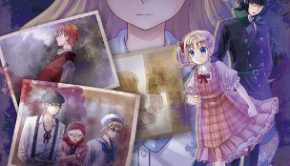
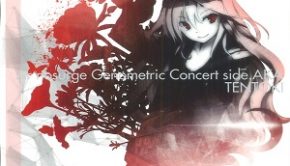
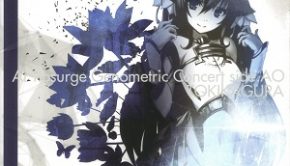
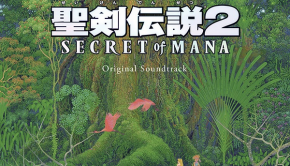










Great review. Very detailed and insightful. I’ll have to check out the soundtrack.
Thanks a lot, Chris. I did my best to put into words the feelings the songs here gave me, as well as explaining as concisely as possible how they fit in the game and the overall sound they have. I’m glad it also made you interested in giving it a listen.